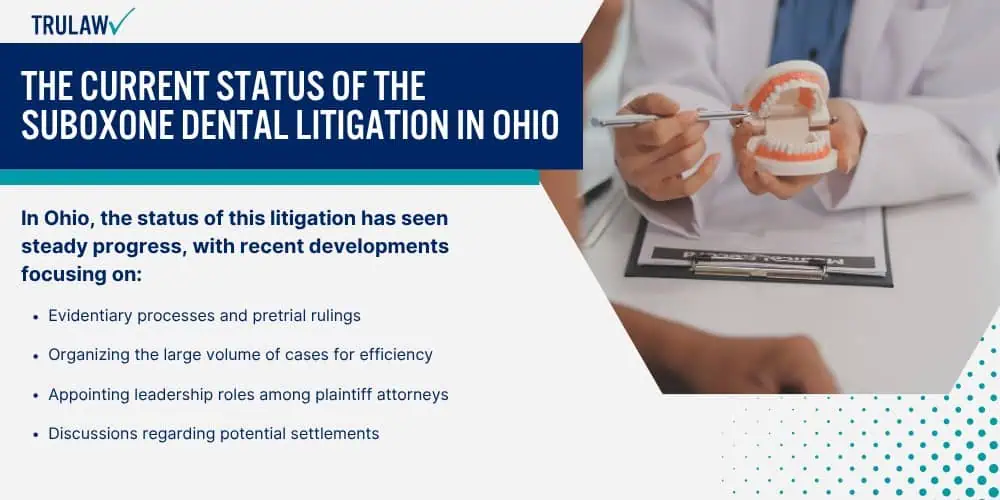On this page, we’ll discuss an overview of the Suboxone tooth decay lawsuits, the implications for those taking opioid addiction medication, aspects related to dental health, issues concerning prescription Suboxone film, and considerations regarding Suboxone sublingual films, and much more.

Can I Still Join The Suboxone Tooth Decay MDL?
The Suboxone Tooth Decay MDL specifically addresses allegations that Suboxone sublingual films — used as a treatment for opioid addiction — may cause significant dental health issues, such as tooth decay.
Individuals who have been prescribed this medication and subsequently experienced dental problems have commenced legal actions, which have been consolidated into a Multidistrict Litigation (MDL).
This MDL centralizes pretrial proceedings with the aim of dealing with numerous cases that share common factual questions, thus providing efficiency and consistency in the rulings.
As with any MDL, people often wonder if they can join the Suboxone lawsuits even after the litigation has commenced.
The answer to this does vary, but here’s what prospective plaintiffs should know:
- Eligibility: Affected users of prescription Suboxone film might be eligible to join the MDL, depending on when they experienced the dental issues and the specifics of their medical history.
- Cumulative Cases: As of now, numerous cases have been incorporated into this MDL across multiple districts, showing the breadth of the issue.
- Process for Joining: Generally, new plaintiffs would file a claim in their jurisdiction, which might then be transferred to the MDL.
- Timeline: The eligibility timeframe for joining an MDL is typically determined by deadlines, referred to as statutes of limitations.
Suboxone tooth decay lawsuits continue to develop, and plaintiffs seek recovery for the harm they’ve suffered both physically and financially due to dental problems.
Suboxone teeth lawsuits shine a light on the potential side effects of opioid addiction medication and stress the importance of informed consent and awareness of medication risks.
Staying informed of the latest developments in the Suboxone MDL is essential for those affected and considering joining the litigation.
As the situation evolves, additional information becomes available, offering further guidance for prospective plaintiffs.













